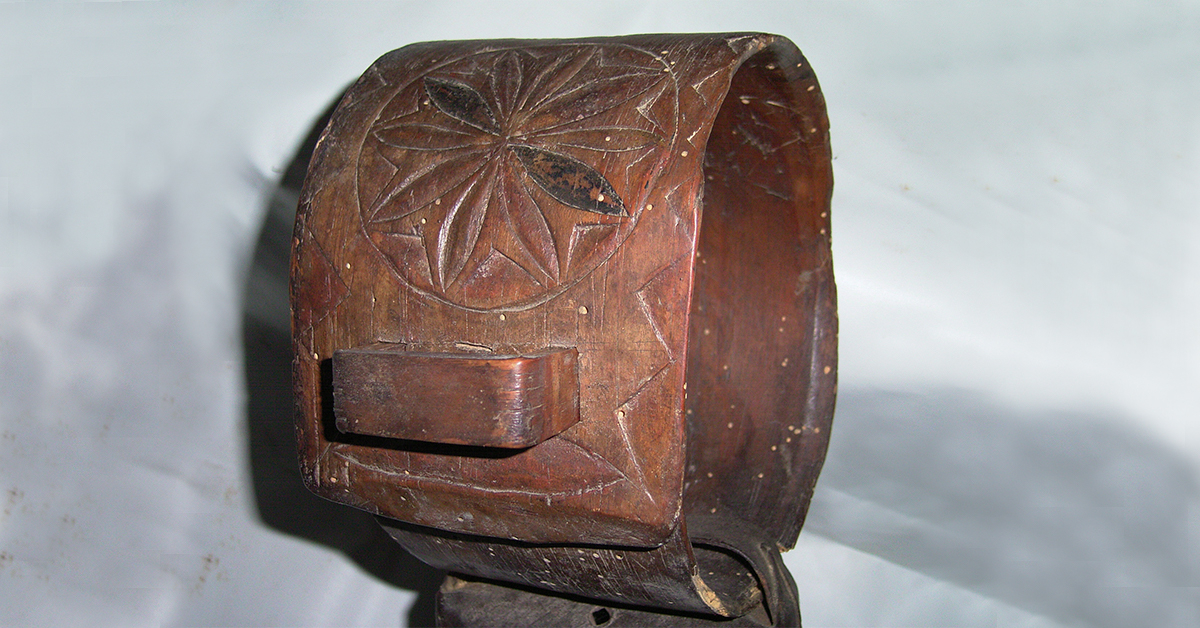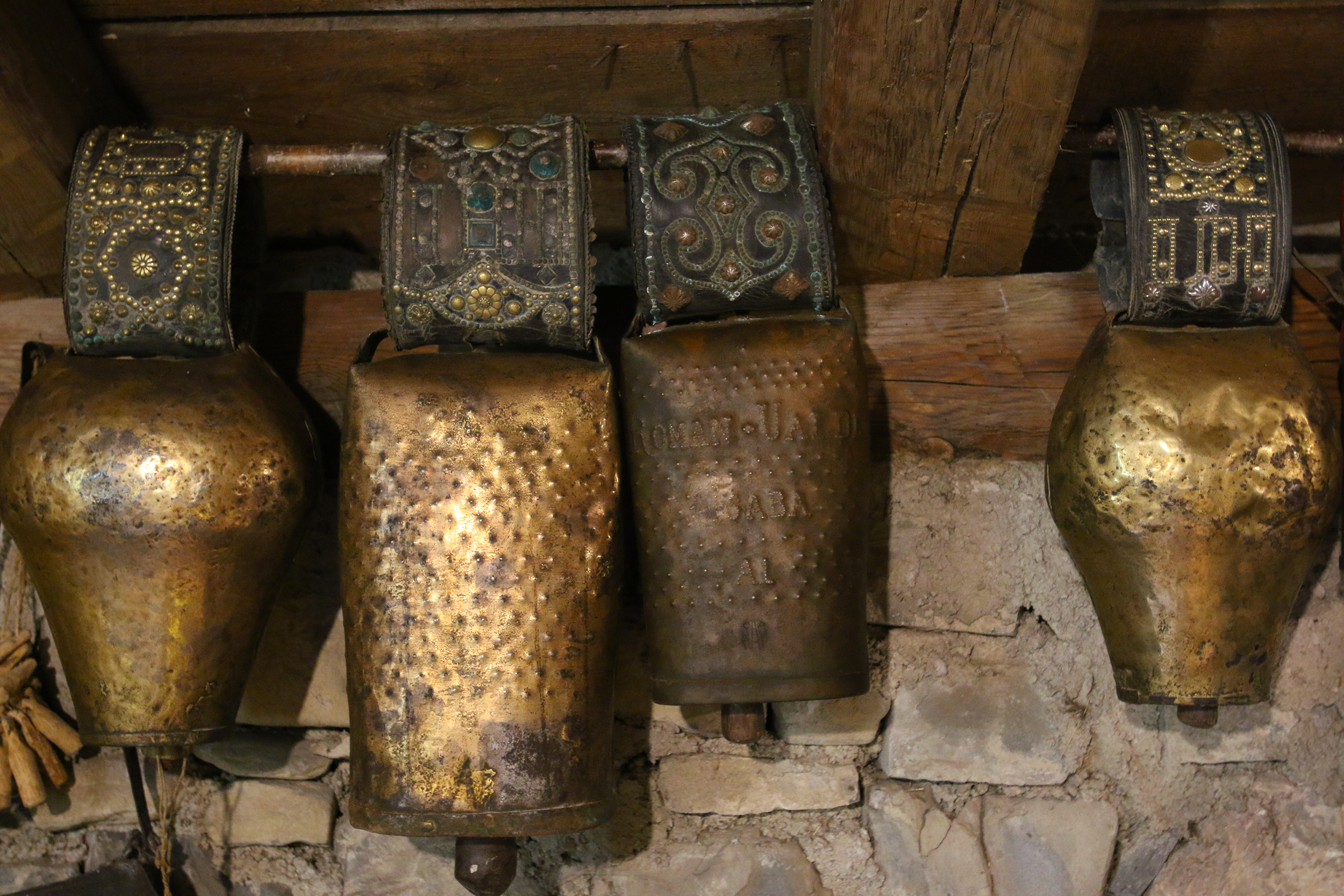Archives

Polychrome bell collar from the 19th century. Ethnographic Museum of the Kingdom of Pamplona. Arteta (Nafarroa). Photo credit: Fernando Hualde.
Within the shepherding culture, within its ethnography, and especially within the craftsmanship surrounding a shepherd’s occupation, there are pieces and devices which need no introduction; quite the opposite applies to others, though, not so much because we do not know them, but because we often do not know their name. Among the latter are bell collars, so-called canablas, and also known as cañablas.
We are referring to collars which sheep, goats, cows and horses wear around their neck, and from where bells are hung so that herds can be heard, identified and located. These are pieces which tend to go unnoticed, very much unlike the truly striking and noticeable bells dangling from them. Here, in these lines, we shall focus on livestock collars made of wood by shepherds themselves, being now gradually pushed into the background by leather straps, and likely to disappear in the short or medium term.

Fernando Hualde.
This is a magic time of the year in mountains, mountaintops…, both from a natural and an ethnographic perspective. Departing from our usual focus on ethnography, let us look at a very specific item.
Thousands and thousands of sheep have already moved from lower, snow-free winter pastures to summer pastures in mountains, mountaintops and higher altitudes along the Navarrese Pyrenees and Urbasa and Aralar Mountain Ranges. Our mountains are filled with the sound of bells worn around the neck of free-roaming sheep, goats, kids, wethers, cattle, mares… The tinkling of livestock bells is in fact the most perfect musical accompaniment to the highland dweller or rambler. (more…)


